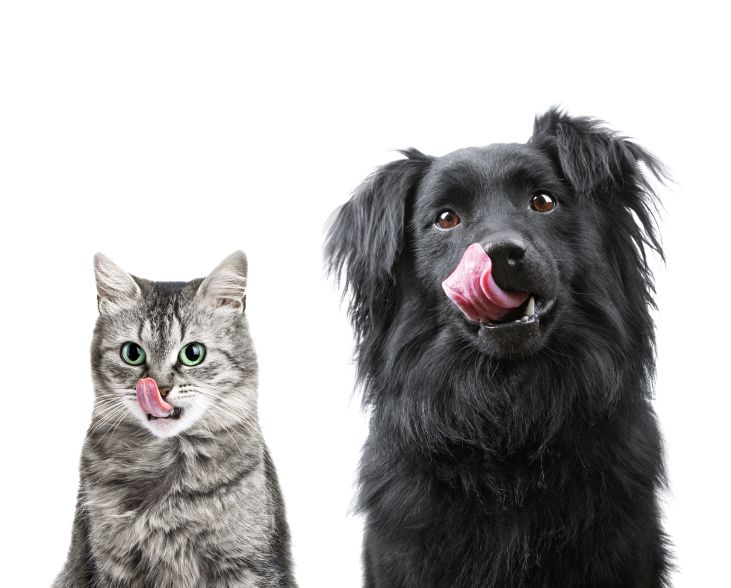Pet Food Trends: Clean Label, Grains, Health Benefits, and More
Humanization, clean label, and “premiumization” continue to drive pet food innovation.
Photo © Shutterstock.com/Elena Rudyk

Pet food innovation in the U.S. is active and healthy. U.S. launches accounted for 37% of total global pet food launches recorded by Innova Market Insights in 2017. And while the number of U.S. pet food launches has slowed slightly in recent years, juxtaposed with a growing number of launches in other, emerging markets, 37% is still a very high share for just one country and attests to the level of innovation in the U.S. market, which has led to a wide range of different products and a high level of segmentation.
The U.S. pet food market is also characterized by a relatively high share of dog food launches. Dog food launches accounted for 63% of 2017 launches in the U.S., compared with 54% of dog food launches globally. Cat food launches accounted for most of the remaining activity, both in the U.S. and globally. And although cat food activity is still well behind that of dog food, it has been increasing its share in recent years, up from 37% to 44% globally over the 2012 to 2017 period and from 27% to 36% in the U.S.
Remaining launch activity comes from food for other kinds of pets, including birds, fish, and small animals like guinea pigs, rabbits, etc., as well as for larger animals such as pigs and horses, and for exotic animals such as ferrets, chinchillas, and a growing range of reptiles.
Human Trends
Humanization of the pet food market is a well-developed trend, mirroring innovation in the human food and drinks industry as a whole, with a strong focus on health. About 84% of global pet food launches used a health positioning of some kind in 2017, rising to nearly 89% in the U.S. The U.S. bias toward dogs is again in evidence, with 93% of dog food launches using health claims and a lower, but still very significant, 81% of cat food introductions doing likewise.
As in the food industry overall, clean labeling continues to be the leading area of interest in U.S. pet food, with over 60% of pet food launches using one or more of “natural,” “organic,” “no additives/preservatives,” and/or “GMO-free” claims. “No additives/preservatives” claims were the most popular, accounting for nearly 46% of claims, ahead of “natural” with 35%. Interest in GMO-free products has risen and is now higher than that for organic products. Non-GMO claims were used for 7.5% of pet food launches compared with 4% for organic claims.
There is also ongoing interest in “free from” foods, with strong interest in gluten-free and grain-free formulations, particularly for dogs. Nearly 19% of 2017 U.S. pet food launches used a gluten-free positioning, rising to 20% for dogs alone. While interest in grain-free options continues, there is also a move in some areas to stay with grains but use more exotic grains-particularly ancient grains, which are often perceived to be healthier. Launches in the second half of 2017 included Health Extension Lamb & Brown Rice Recipe pouched dry foods containing quinoa and flax. Green Pet Organics’ Simply Wild Lil Crunchers treats in Chicken and Bison & Apple flavors are based on buckwheat, and Canidae’s Under the Sun Original Adult Dog Food features millet.
Other popular marketing platforms include protein content, vitamin and mineral fortification, digestive/gut health, omega-3 fatty acids, and skin health. There is also ongoing interest in diets for specific age groups, health conditions, and need states.
Premium for Pets
Humanization has also driven premiumization of the pet food market, with an increasing number of launches targeting the premium and super-premium markets, centered on a spirit of indulgence as well as a range of health positions. Over 16% of 2017 U.S. launches recorded by Innova Market Insights carried an indulgence/premium position, up from 13% in 2016. This rises to 18.5% in cat food, where there has been strong growth in super-premium, single-serve formulations and rising use of human food–style recipes, such as broths, stews, and casseroles. Broths have been increasingly seen in the cat food market, while dog food tends to focus more on heartier, meaty fare, such as Ainsworth Pet Nutrition’s Rachael Ray’s Nutrish Super Premium Hearty Beef Stew.
More recently, we have also seen added indulgence with so-called “toppers” of tasty, added ingredients. Take the Purina Muse cat foods range. Its Natural Tuna & Tilapia Recipe in Broth comes with a Baby Clam topper; its Natural Ocean Fish comes with an anchovy topper.
The use of more unusual meats is also a hallmark of the super-premium market, with brands such as Walk About launching canned dog and cat foods featuring more exotic meats such as goat, wild boar, and wild kangaroo.
Restaurant qualities are also manifesting in the pet food category with brands such as Catered Bowl, which offers a range of premium, organic canned and dry recipes for cats and dogs. Launches include its Wild-Caught Alaskan Whitefish, Organic Chicken, and Antibiotic-Free Turkey recipes. There is also rising interest in seasonal options and in limited-edition formats and flavors, particularly for special events such as Christmas so that pets can share in the celebrations.
The human/animal bond now defines the pet food market in the U.S. It is perhaps not surprising that the clean-label trend has expanded to the pet food market as it has in the human foods market, with a requirement for transparency and accountability. There is also rising interest in sustainability, stemming from Millennial pet owners. Keep an eye on this exciting market.
Innova Market Insights is your source for new-product data. The Innova Database (www.innovadatabase.com) is the product of choice for the whole product-development team, offering excellent product pictures, search possibilities, and analysis. See what food manufacturers are doing around the world: track trends, competitors, ingredients, and flavors. In today’s fast-moving environment, this is a resource you cannot afford to be without.
Also read:
Pet Health Supplements: Paw-Portunity Knocks

Prinova acquires Aplinova to further increase its footprint in Latin America
April 7th 2025Prinova has recently announced the acquisition of Brazilian ingredients distributor Aplinova, which is a provider of specialty ingredients for a range of market segments that include food, beverage, supplements, and personal care.

.png&w=3840&q=75)

.png&w=3840&q=75)



.png&w=3840&q=75)



.png&w=3840&q=75)
























